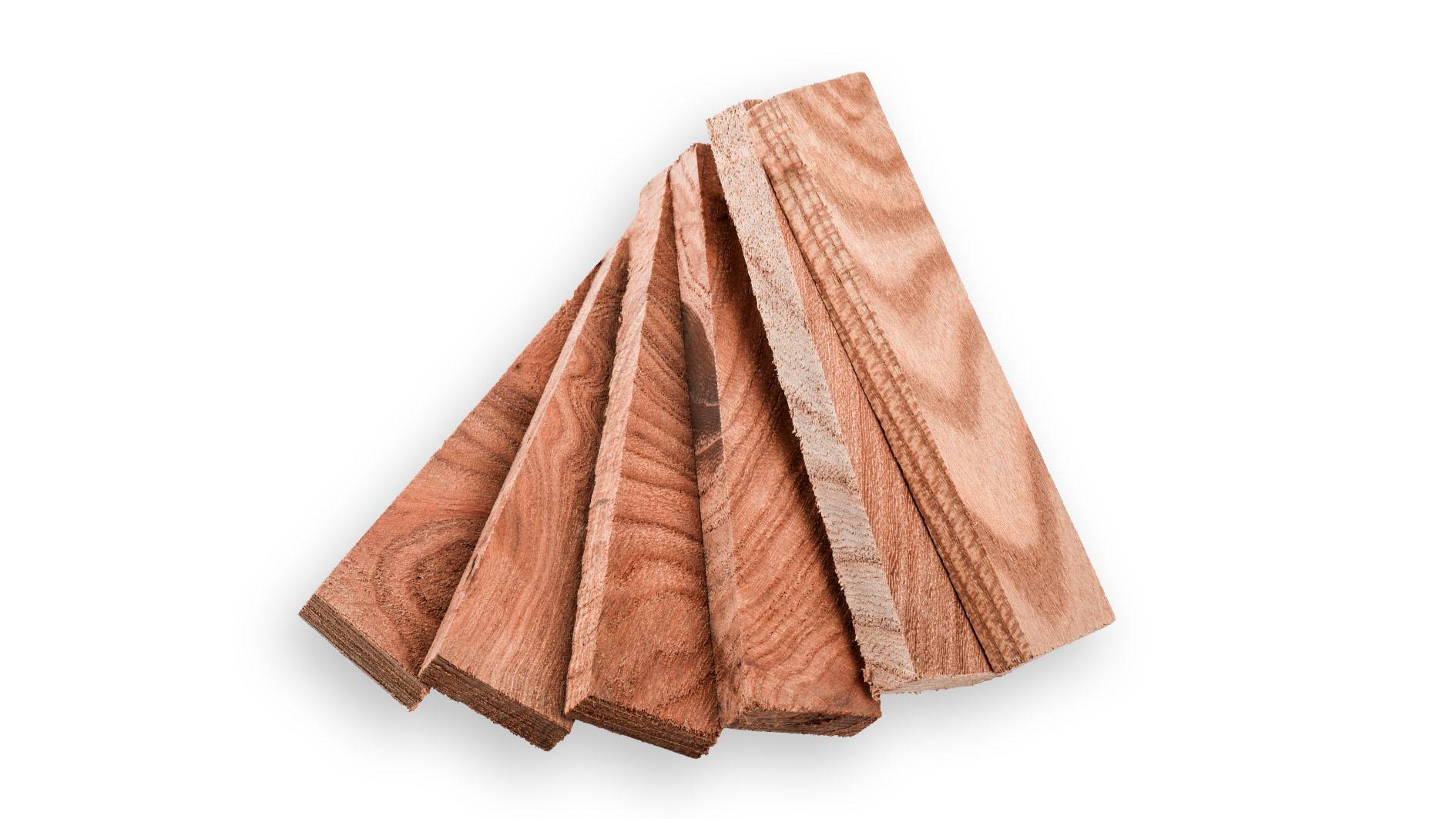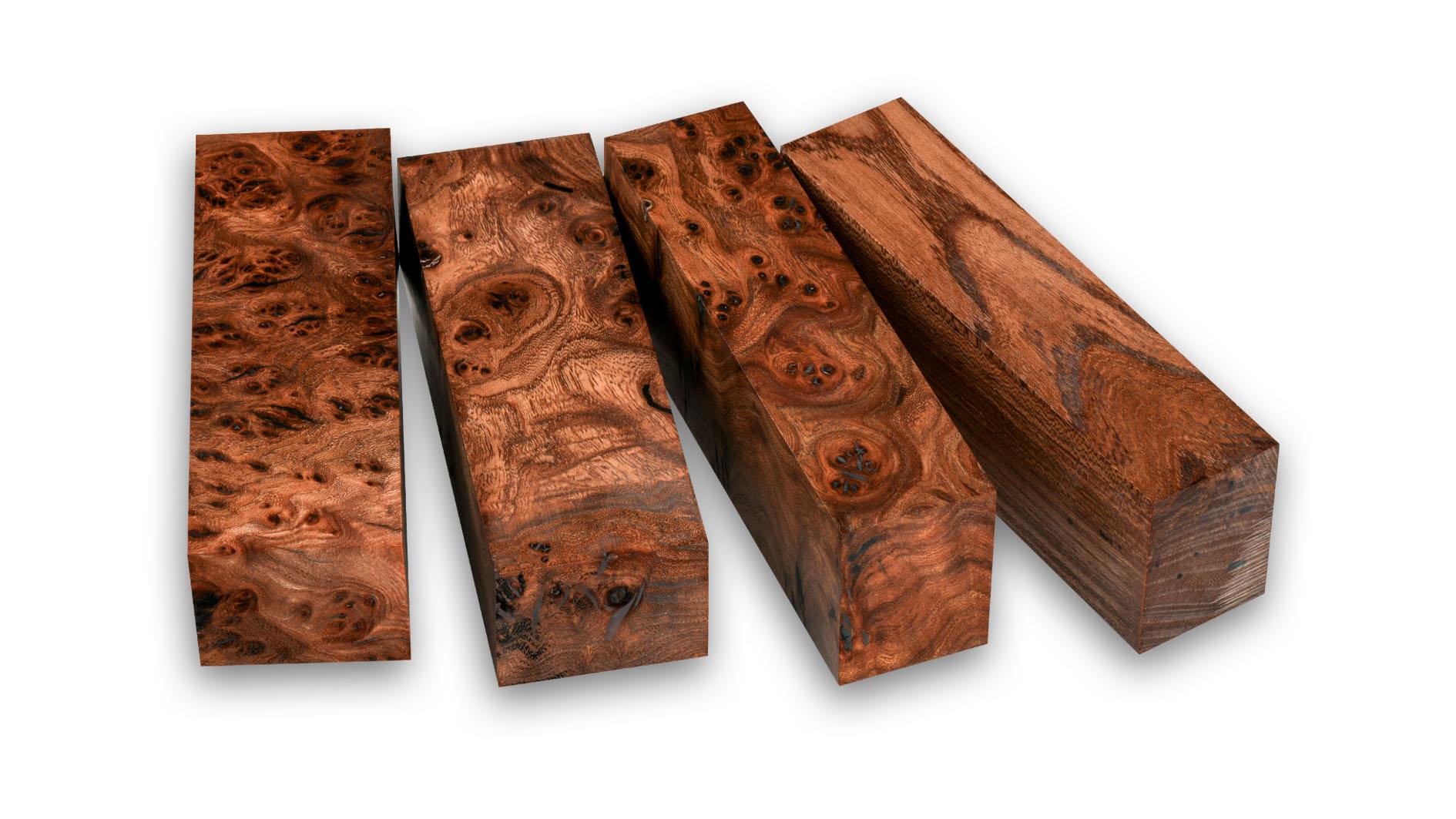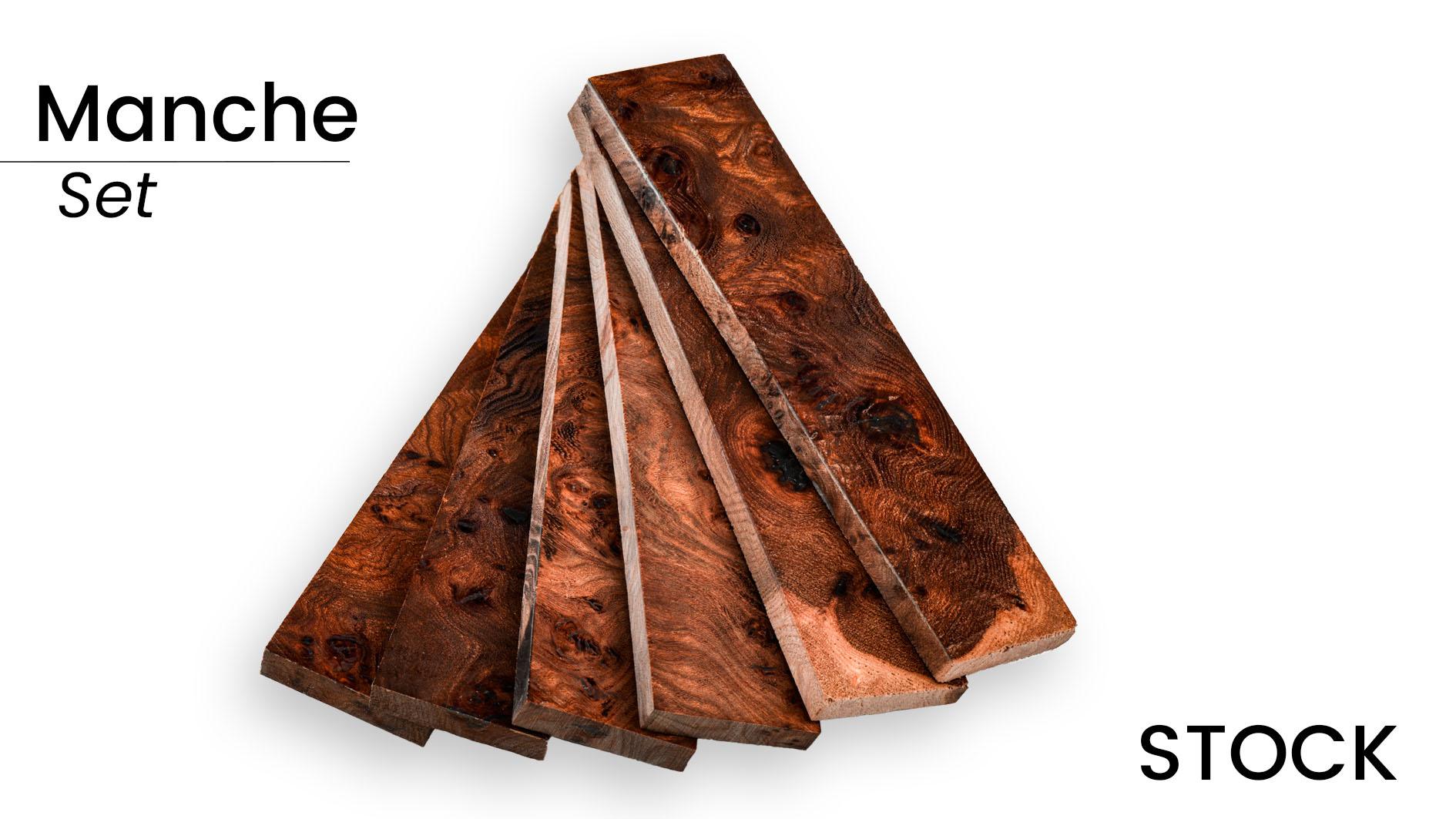A Natural Treasure for Exceptional Creations
.jpeg)
Explore the riches of elm, an elegant and durable wood, perfect for cutlery and artistic creations. With Mercorne, discover craftsmanship that blends tradition and innovation.
The fascination for elm, Ulmus spp., transcends epochs and borders. This wood, renowned for its strength and beauty, holds a special place in the world of cutlery, as well as in other creative fields such as jewelry, fashion, and perfumery. Mercorne, a pioneer in wood stabilization since 2006, invites you to delve into the universe of this exceptional material, which combines aesthetics, resilience, and history.
History and Botany of Elm
Elm, or Ulmus spp. in Latin, distinguishes itself not only by its majestic appearance but also by its resilience. Originating from the temperate regions of the northern hemisphere, this tree has left its mark on civilizations with its presence both in cities and in the countryside, offering shade and protection. With its characteristic wood grain and serrated leaves, elm has traversed the centuries, becoming part of the natural and cultural heritage of many regions.

Elm from the Perspective of the Woodworker
Woodworking, the art of working wood with precision and creativity, finds in elm a valuable ally. Its fine texture and ability to age gracefully make it a preferred material for knife handles, where the balance between aesthetics and functionality is paramount. Elm thus enables artisans to materialize their vision, creating pieces that are both beautiful and enduring.
Elm Stabilized by Mercorne
Wood stabilization is a revolution in the world of cutlery and beyond. This process involves vacuum impregnating the wood with a resin, densifying it and making it more resistant to water and temperature variations. Mercorne, at the forefront of this technology since 2006, has perfected the stabilization of elm, thereby offering a top-choice material for unique and long-lasting creations.

Elm in Tales and Legends
Beyond its physical qualities, elm holds a special place in the collective imagination. As a tree of justice under which judgments were once rendered, a symbol of strength and resilience, elm inspires respect and admiration. The tales and legends surrounding it testify to this mystical aura, enriching its history and symbolic value.
Elm, with its natural beauty, strength, and rich history, continues to captivate and inspire. At Mercorne, the commitment to excellence and innovation in stabilizing this wood illustrates a passion for creating exceptional objects. Elm is not just a material; it is an endless source of inspiration, a link between tradition and modernity, between nature and human creation.

FAQs
• What are the advantages of elm for knife handle manufacturing?
Elm is a preferred choice for knife handle manufacturing due to its unique texture and high mechanical resistance. This wood species has high density, providing strength and durability suitable for daily use. Additionally, elm features aesthetically pleasing grain patterns, ranging from wavy lines to more complex designs, adding elegance and uniqueness to each piece. Its ability to absorb finishes and treatments also makes it adaptable to various aesthetics and design preferences.
.jpeg)
• How does Mercorne stabilize elm wood?
Mercorne, specialized in wood treatment for cutlery, employs an advanced stabilization process for elm wood. This technique involves vacuum impregnation of the wood with acrylic or epoxy resin, followed by polymerization under heat. This process fills the wood pores, protecting it against moisture, temperature variations, and chemical aggressions. The wood becomes more durable, resistant to deformations and cracks, while preserving its natural beauty and enhancing its workability for artisanal tasks.
• Why choose stabilized elm for various creations?
Mercorne, specialized in wood treatment for cutlery, employs an advanced stabilization process for elm wood. This technique involves vacuum impregnation of the wood with acrylic or epoxy resin, followed by polymerization under heat. This process fills the wood pores, protecting it against moisture, temperature variations, and chemical aggressions. The wood becomes more durable, resistant to deformations and cracks, while preserving its natural beauty and enhancing its workability for artisanal tasks.
.jpeg)
• Does elm require special maintenance?
Although the stabilization process significantly reduces the need for maintenance for elm, minimal upkeep can further prolong the beauty and durability of the material. It is recommended to clean stabilized elm pieces with a soft, dry cloth to remove dust and dirt. For stains, a slightly damp cloth can be used, followed by immediate drying. Avoiding prolonged exposure to water and extreme temperatures is also advisable to preserve the integrity of the wood.
• What is the history behind the use of elm in cutlery and other trades?
Elm has a long history of use in various trades, including cutlery, due to its mechanical and aesthetic qualities. For centuries, it has been valued for its robustness and ability to withstand stress, making it an ideal choice for tool and weapon handles. Over time, advancements in wood processing techniques, such as stabilization, have further expanded the applications of elm, reinforcing its presence in the creation of art objects, musical instruments, and decorative articles, demonstrating its versatility and timeless appeal.
In Same Category
- CALCEON – by RAFFIR – Unique beauty forged underwater
- Jamaican Rain Tree (Brya Ebony)
- Everything You Need to Know About Bog-Wood – An Exceptional Material for Artisans
- Seafoam Block: A Unique Material for Crafting and Knife Handles
- The Use of Drill Bits and Taps in Knife Making: Techniques and Advantages

Comments
No comment at this time!
Leave your comment